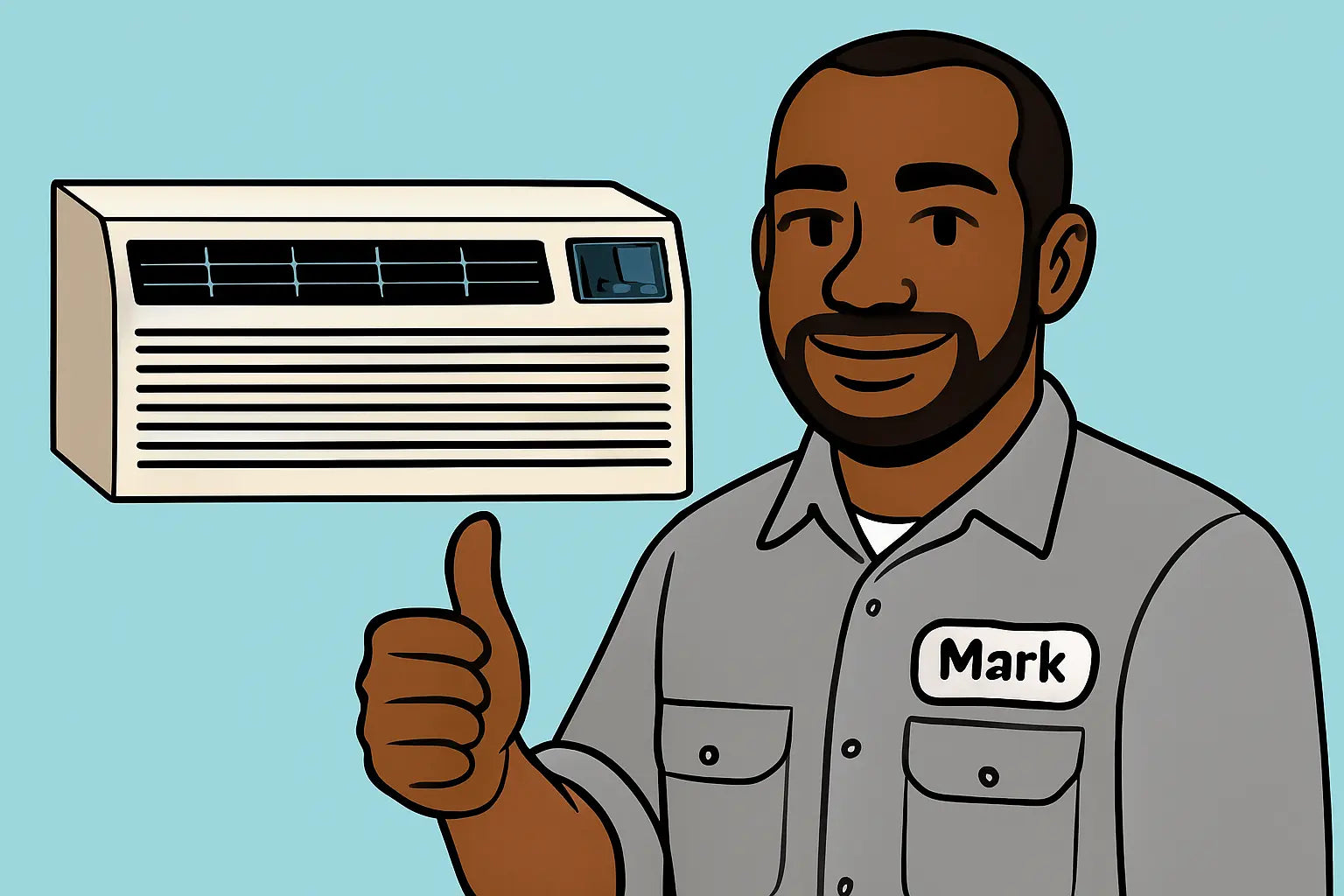Intro from Mark
Hey there, it’s Mark, your straight-shooting HVAC guru with a knack for cutting through the jargon and getting your gear running right. Today, we’re diving deep into the Amana Distinctions 12,000 BTU PTAC with 3.5 kW electric heat—a solid choice for individual room climate control. Whether you’re installing it for the first time or troubleshooting some pesky issues, I’ve got your back with tips, tricks, and real-world know-how. Let’s roll up our sleeves and get this done! 🔧🔥
Why the Amana Distinctions PTAC Rocks
PTAC units are the unsung heroes of space conditioning in hotels, apartments, and senior living facilities. This model’s got it all: efficient cooling and reliable electric heating backup packed into a neat wall-mounted unit. It’s designed to fit snug into wall sleeves, eliminating ductwork headaches.
Prep Work: Setting Yourself Up for Success
Wall Sleeve & Clearance
First things first: your wall sleeve has to be level and perfectly sized. A poorly installed sleeve means water drips in places it shouldn’t, noise leaks, or airflow struggles. You want about 6-8 inches of clearance outside for proper ventilation. This PTAC installation guide from PTAC Crew nails all the must-knows for the wall prep phase.
Voltage & Wiring
The Amana Distinctions PTAC runs on 208–230 volts, so double-check your breaker and wiring gauge. If you’re retrofitting, don’t guess—verify your electrical system meets specs before you try to power it up. This comprehensive overview on electrical requirements will walk you through what’s needed.
Tools & Safety
Grab your gloves, a grounded multimeter, and maybe a friend who knows their way around electrical boxes. You’ll want the official Amana installation manual handy for reference. Trust me, it pays to have all the right gear and instructions before you start.
Step-by-Step Installation
-
Insert and secure the wall sleeve, making sure it’s level and well-sealed to keep drafts and noise out.
-
Slide the PTAC unit into place—no wiggle room! Seal any gaps with foam to block airflow leakage.
-
Wire the unit per the schematic: secure the power cable, connect to the breaker, and apply strain relief so no tugging can loosen connections.
-
Power up the unit and give yourself a nod of approval for doing it right. Here’s a detailed walkthrough from
First-Time Startup Checks
-
Clean the air filters—they come dusty from the factory.
-
Cycle through modes (heat, cool, fan) and listen closely for unusual sounds.
-
Use the owner’s manual or quick-start guide to pair or program the thermostat controls.
Troubleshooting Like a Pro
Unit Won’t Power On
Check the outlet, breaker, and cord first—these are the usual suspects. Many times, you’ll find a tripped GFCI or breaker waiting to be reset. If the power switch on the unit itself is off, flip it back on and try again. For detailed help, HVAC.com has a solid troubleshooting guide for Amana PTACs.
Cooling Issues
Make sure the thermostat is set to cool and below room temp. Dirty filters or blocked vents can kill airflow, so clean those first. If it hums but doesn’t cool, the compressor or refrigerant might be the problem. Time to call a pro if you’re not comfortable handling refrigerant.
Heating Problems
If the heat pump doesn’t kick in or electric heat strips aren’t working, it might be a stuck reversing valve or a blown fuse in the heater. Try resetting the breaker and master switch.
Error Codes
Diagnostic mode is your friend. Hold the UP + DOWN arrows, then press COOL twice to get codes like FP (Freeze Protection) or L6 (Discharge Overheat). These codes help pinpoint issues fast. For the full rundown on what those codes mean, check out this error codes blog from PTAC Units.
Manual Reset
If all else fails, power down, hold the HEAT + COOL buttons, then power back up. A red light confirms the reset was successful. Handy for stubborn errors and glitchy controls.
Maintenance to Keep Your PTAC Purring
Monthly filter cleanings and bi-annual fan blade checks are your best bets for avoiding issues. Annual coil cleaning and hardware tightening will keep things humming for 10+ years.
Final Thoughts from Mark
There you have it—your no-fluff, no-frills, straight-up guide to installing and troubleshooting your Amana Distinctions 12,000 BTU PTAC with 3.5 kW electric heat. Follow these steps, respect the electric, and your PTAC will run smooth and reliable. If you’re ready to grab one or need to check specs again, head over to the Amana Distinctions 12,000 BTU PTAC unit product page. And remember, when the gremlins show up and your skills aren’t quite enough, don’t hesitate to call in a certified technician.
Need sizing tips? Visit: How to Properly Size an Amana PTAC Unit for Your Space.
Stay cool, stay safe, and catch you on the flip side! ✌️🔥
- Mark, your cool HVAC guide







